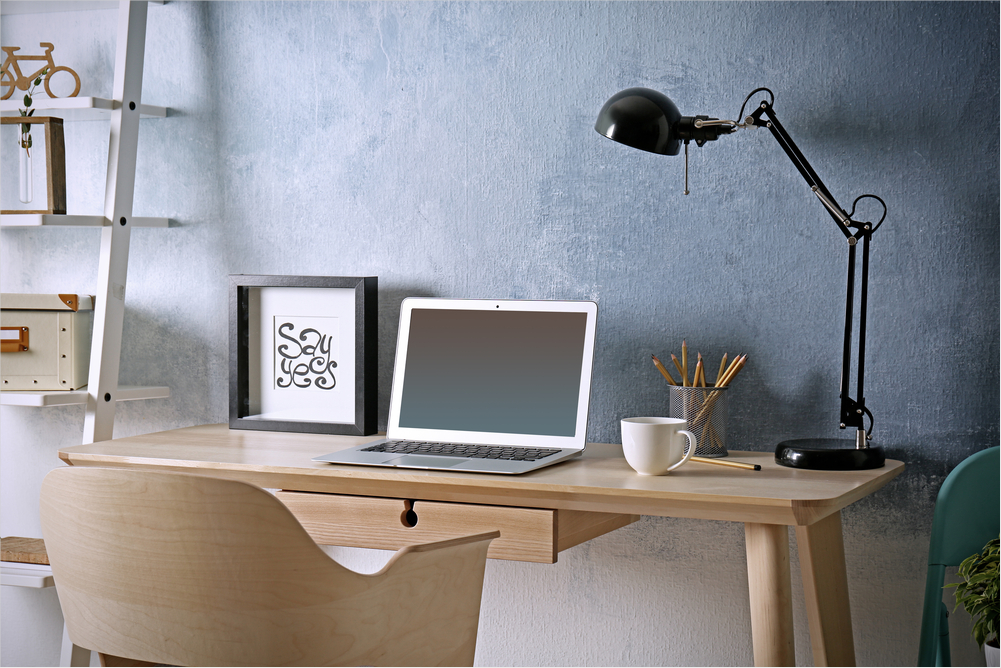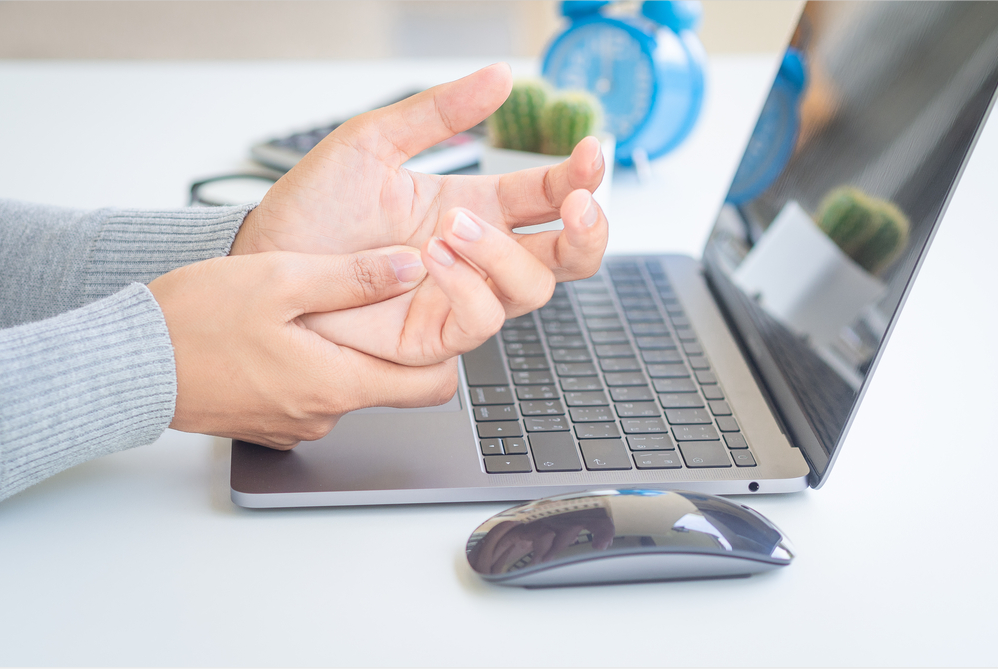From FLEXISPOT

In June 2020, Stanford University Economist Nicholas Bloom said that 42% of working people in the US worked from home full-time. A study by Pew Research Center concluded that while 20% of people worked from home before the Covid-19 pandemic, by December 2020, that number has risen to 71%.
The Pew Research Center also reports that out of the people forced to work from home because of the pandemic, 54% said they would like to work from home even when the outbreak ends.
The numbers above show that while the coronavirus outbreak may not have started the working from home trend, it has undoubtedly been a catalyst for the establishment of many a home office. Many of these offices do not fit the idea of good ergonomics. Ergonomics is the process of arranging or designing spaces and products to fit the individuals that use them.
In this article, we look at some home office ergonomic statistics you may need to know.
Â
Why Care About Home Ergonomics Statistics?


Before we look at home office ergonomics statistics, why do we even need to be concerned about these numbers? We need to know the numbers because we’re only able to manage what we know. Many people may not be aware of the implications of the physical conditions under which they work.
Working in an environment that suits your needs impacts several other aspects of your life, including your happiness, health, and productivity.
When we know the situation on the ground, based on statistics, we are clear about the importance of each of the resources we use in the home office. With proper knowledge, we can think carefully about the chair, desk, computer monitor, and lighting we use in our home offices.
In an article published by Inc.com, Minda Zetlin suggests that “Unless you have the right [home office] setup, sooner or later, you will wind up with back pain.†She suggests that when compared to the cost of ensuring good home office ergonomics, this back pain could be more expensive in the long run.
Â
A Lack Of Knowledge About Ergonomics
Many workers cannot provide the correct definition of the term ergonomics. Sandy Smith writes for the website that provides information on occupational safety, environmental and risk management, sustainability, and workplace quality of life, EHSToday.com. Shereports that a survey involving 700 employees concluded that only 20% of employees know the correct definition of ergonomics.
Smith reports that even though there is confusion among employees about the precise meaning of ergonomics, employees seem to know that it is important. For instance, she reports that “77 percent of people think that ergonomics in the workplace is important†and “81 percent think that it has an effect on productivity while only 7 percent think ergonomics has no effect on productivity.â€
Â
Inadequate Workspace


Many people who started working from home because of governments’ restrictions on movement starting in 2020 had to shift to a home office overnight. A lot of homes were never designed to be used as an office.
Therefore, it is not surprising that almost 25% of people working from home say that finding adequate workspace was somewhat or very difficult. When a workplace is inadequate, it fails to meet the principle of good ergonomics.
The producer of web-based collaboration tools that facilitate teamwork, Nulab.com conducted a survey involving 856 people to determine the location within the home where these people were working from and the furniture they used. Results from the survey show that people worked from the following places:
- Home office: 28.6%
- Master bedroom: 28.5%
- Living/family room: 19.9%
- Dining room: 8.3%
- Guest bedroom: 6.5%
- Kitchen: 3.9%
- Basement: 2.2%
- Child’s bedroom: 0.5%
- Outdoor area: 0.4%
- Other: 1.3%
Â
The inadequacy of workstations for some employees working from home has a negative effect on such employees’ work/life balance. For instance, Statista.com reports that “As many people who work from home do not necessarily have a designated workspace, they experience a conflation between their living area and workplace.†This could lead to employees overworking and neglecting other important parts of their lives, such as exercise.
Â
The Challenge Of Chairs
Based on a University of Cincinnati study involving 46 individuals who submitted pictures of their home offices, Kermit G. Davis and others report that most people (58%) working from home have some kind of office chair. However, not all of these chairs are proper office chairs.
If 58% of people working from home have some type of office chair, where are the other42% sitting when they are working? The study by Davis and colleagues reports that 27% of them use a dining chair, and 15% use a none-chair like a couch or bed.
Davis and colleagues evaluate the ergonomics of the chairs used in home offices, and their conclusions are concerning. For instance, they report that 41% of the chairs they surveyed were too low while 2% were too high. This could result in poor posture while working, such as leaning on the front edge, raised arms, and poor head position.
But why do we have to worry about the state of the chairs that workers use in their home office? The regional sales director at the supplier of office furniture and accessoriesHerman Miller Mexico, Arturo Mota, has the answer. He is quoted by Entrepreneur.com saying that “guaranteeing a good posture through different tools is an obligation and a support that will generate an increase in productivity.â€
Mota adds that “Having an ergonomic chair as one more work tool guarantees between 15% and 20% more productivity, reducing distractions and providing physical and mental benefits.â€
Â
More Productivity From A Desk
The Nulab.com survey showed that more than half (58.5%) of the respondents working from home worked from a desk. From the results, Nulab.com concludes that “desk-workers were more likely to be productive than those who reported working elsewhere.†Adding, “The dining table, couch, and bed did not measure up.â€
From their University of Cincinnati study, Davis and colleagues report a higher proportion of individuals who said they worked from a desk (88%). The same study concluded that a small portion worked from a table (7%).
Davis and colleagues’ study has some encouraging findings showing that out of the individuals who worked from a desk, four had standing desks while one had a treadmill workstation.
The importance attached by home employees to a desk is reflected in figures published by Statista.com, which reports that “In 2020, 27 percent of consumers were prioritizing a desk when considering purchasing home office furniture in the United States.†Adding that “Demand for home office furniture spiked as a result of the COVID-19 pandemic.â€
The fact that at least one worker in the Davis and colleagues’ study reported that they have a treadmill workstation is quite encouraging if you look at the benefits of walking while you work. Scientific studies support these benefits.
Neuroscientist Michael Larson and exercise science professor James LeCheminant, both from the Brigham Young University, conducted a study into the effectiveness of treadmill desks. They conclude that “the health benefits of a walking desk … appear to outweigh the slight drop in productivity that comes with such a setup.â€
Based on the results of their study, Larson and LeCheminant recommend the introduction of sit-stand and treadmill desks as a way of creating good ergonomics in the office.
Â
Lighting In The Home Office


From their study, Davis and others note that the lighting in some workstations was poor, with 17% having glare and 5% being too dark. The same researchers note that glare in the home office tends to be worsened by the fact that home offices “typically contain more windows than an individual’s respective workplace office, due to sunlight exposure through untreated glass.â€
Glare is the difficulty to see clearly caused by a direct or reflected source of light such as sunlight or other forms of artificial light. Glare can be reduced by ensuring adequate light and making sure that the light in the office is indirect. This can be achieved through creating task lighting and ensuring that screens face away from light sources.
Â
Computer Equipment
Â
From its study on home office trends, Nulab.com reports that nearly 57% of respondents indicated that their employers would not allow them to use company equipment such as computers and laptops when working from home, with 31.8% saying that they had to buy their own equipment.
The study by Davis and colleagues concluded that in most cases, the monitor position in home offices was either off to the side or too low. Seventy-five percent of the surveyed employees were using laptops. For those using external monitors, the researchersconclude that the devices were set up too high (4%) or too low (52%)
Davis and colleagues also note that “Another common issue with the monitors was the lack of the primary screens centered in front of the workers (31%), resulting in twisting of the neck and/or back to view the monitor.†In most of the cases (73%), the secondary monitors were not centered.
Â
Health Risks Of Poor Ergonomics


Proper home office ergonomics are not just a good thing to have; they constitute a crucial element. Bad home office ergonomics can result in certain health challenges. It’s vital to realize that the health issues may not be detected immediately but can cause problems over time.
Â
Longer Working Hours And Fewer Breaks
In an article published by InsuranceBusinessMag.com, Alicja Grzadkowska looks at workers’ insurance liabilities facing employees working from home. Grzadkowska reports that “the Occupational Safety and Health Administration (OSHA) has determined that almost a third of dollars spent on workers’ comp costs come from claims involving ergonomic injuries.â€
Grzadkowska cites the senior vice president of workers’ compensation at Worldwide Facilities, Todd Pollock, who says, “instead of an eight-hour day with two 10-minute breaks and a lunch hour, employees may decide to power through their workday with no break at all, causing physical fatigue and injuries associated with carpal tunnel, neck and back pain, and forward head posture problems from sitting at a computer and rounding the shoulders to lean the head forward.â€
Grzadkowska also notes that as employees work longer hours at home, they expose themselves to a higher risk of musculoskeletal disorders. According to the Occupational Safety and Health Administration (OSHA), these disorders result in claims of more than$50 billion per year in the US.
Â
Worsening An Already Bad Situation
While we mainly focus on the effects of bad home ergonomics because of the Covid-19 pandemic, it looks like the situation was already bad before the pandemic. Therefore, one could argue that poor ergonomics have been an issue in both colocation and home offices for some time now.
The Canadian website, HRReporter.com, cites a study conducted in the US and Canada in 2019, which concluded that 53% of respondents indicated that “Musculoskeletal conditions have the most impact on employers’ overall health-care costs.â€
Â
Dealing With Bad Home Office Ergonomics
Knowing the home office ergonomic statistics and leaving it there will not be helpful. Thus, Davis and colleagues provide advice on how some of the issues they identified can be dealt with:
- Adjust the height of your seat. If the seat doesn’t have an adjust feature, place a pillow on it.
- Place a pillow behind your back for lumbar support, eliminating the need to lean away from the chair’s back.
- Have your back against the seat’s back by bringing the chair closer to the desk.
- If the laptop or monitor is too low, use a stake of books to raise it.
- Keep the main monitor directly in front of you when using multiple monitors.
It’s also essential to ensure adequate legroom and support for your feet.
Â
Take frequent breaks.
Â
Jason McCann writes for Forbes.com and advises that the secret to getting home office ergonomics right is to have a list of what you want and need. For companies, this could be achieved by conducting an employee survey to start a dialogue that could assist in understanding the working conditions of employees working from home.
Even though ergonomic issues and working in awkward positions may seem harmless now, you may get problems in the future. Poor ergonomics have been noted to result in some health challenges linked to nerves, muscles, ligaments, and tendons. If you can correct your home office ergonomics, the best time to do so is now.
SOURCE: FLEXISPOT





